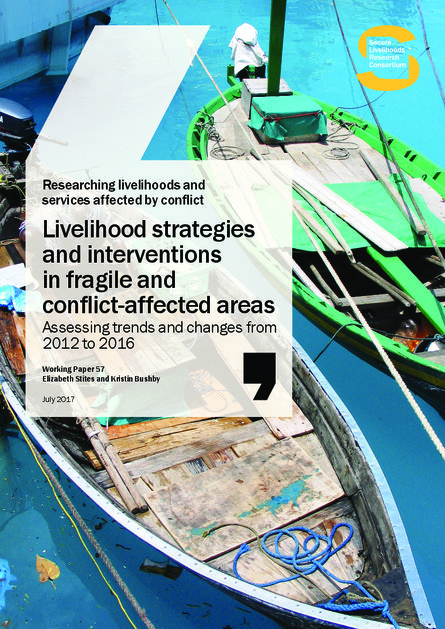
Most people survive conflict and crisis not through international interventions but by relying on their own efforts, adaptations, networks and systems. By the same token, some of the greatest suffering and repercussions of conflict and crisis arise from the damage done to these systems and the institutions that support them. In the early 1980s, a growing number of international practitioners and academics began focusing on the systems and strategies that people pursue, and the environments in which these systems operate. This thinking found its way into donor discourse and the programming of international organisations, and became known as the ‘livelihoods approach’. Although initially envisaged as most relevant to development contexts, by the late 1990s there was a growing recognition within the humanitarian community of the need to better understand livelihoods in conflict affected and fragile environments. Today there is increased attention to both the ways in which local populations seek to survive or prosper within contexts of hardship and crisis, and to the successes, failures and lessons learned from national and international interventions undertaken in an effort to protect, support or promote local livelihoods.
This report discusses some of the major conceptual trends in how stakeholders view livelihoods; examines selected livelihood strategies of conflict-affected populations that have become more visible in recent years; and reviews advances in the nature, type and scope of interventions initiated by humanitarian agencies and organisations. It builds upon a review of livelihoods by Mallet and Slater (2012) undertaken as part of the Secure Livelihoods Research Consortium (SLRC), which is headed by the Overseas Development Institute (ODI). The period under review for the current report is 2012-2016.